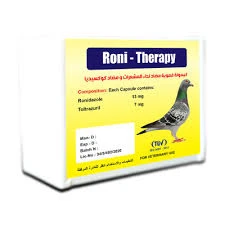
جولائی . 31, 2024 19:57 Back to list
Understanding the Impact of Custom Coccidia Strains on Chick Health and Growth Development
Custom Coccidia in Chicks Understanding and Management
Coccidia are microscopic parasites that belong to the Eimeria genus and are a significant concern for poultry farmers, particularly regarding young chicks. These parasites invade the intestinal lining of their hosts and can lead to coccidiosis, a disease that can cause severe health issues and even death if left unchecked. In this article, we will explore the implications of custom coccidia, their life cycle, symptoms of infection, and effective management strategies for maintaining healthy flocks.
Understanding Coccidia Life Cycle
Coccidia have a complex life cycle that primarily occurs in the intestines of chickens. The cycle begins when infected feces contaminate the environment, leading to the spreading of oocysts, which are the resistant forms of coccidia. Chicks contract the parasites when they ingest these oocysts from contaminated feed, water, or bedding. Once inside the intestine, the oocysts hatch and release sporozoites, which invade the intestinal cells and begin to multiply. This multiplication causes cell damage and ultimately leads to the release of more oocysts, perpetuating the cycle.
Symptoms of Coccidiosis
Chicks affected by coccidiosis may exhibit various symptoms, including lethargy, poor weight gain, and reduced feed intake. More severe cases can lead to diarrhea, which may be bloody in appearance, and dehydration. In young chicks, the disease can quickly become fatal if not addressed promptly. Other signs include a ruffled appearance, huddling, and a decrease in activity levels. Farmers should keep a close watch on their flock, particularly during the early stages of growth, as young birds are more susceptible to severe outcomes.
Prevention and Management Strategies
Preventing coccidiosis in chicks requires a multi-faceted approach focused on management practices and biosecurity measures
. Here are some key strategiescustom coccidia in chicks

1. Clean Environment Regularly clean and disinfect the poultry house to reduce the prevalence of coccidia oocysts in the environment. Ensure that bedding is dry, as moisture can encourage the growth of coccidia.
2. Biosecurity Measures Implement strict biosecurity practices to prevent the introduction of coccidia into the flock. This includes controlling access to the poultry house and minimizing contact with wild birds or other farm animals that may carry the parasites.
3. Vaccination There are several available vaccines that can help protect chicks against coccidia. Discussing vaccination strategies with a veterinarian can help determine the best options based on the specific risks present in your area.
4. Medicated Feed Providing medicated feed containing anticoccidial drugs can be an effective way to manage the initial exposure of chicks to coccidia. However, it is essential to use these medications judiciously to prevent the development of drug resistance.
5. Nutritional Support A well-balanced diet can strengthen the immune system of chicks, making them less susceptible to infections. Ensure they have access to fresh water and high-quality feed that meets their nutritional needs.
6. Monitoring and Early Intervention Regularly monitor the health of the flock and be vigilant for any signs of illness. Early intervention with medications or adjustments to management practices can help mitigate the impact of an outbreak.
Conclusion
Custom coccidia in chicks pose a significant challenge for poultry farming, but understanding their biology and implementing effective management strategies can greatly reduce their impact. By maintaining a clean environment, employing biosecurity measures, and utilizing vaccines or medicated feeds when necessary, farmers can protect their flocks from the harmful effects of coccidiosis. Ultimately, fostering a proactive approach will lead to healthier chicks and more productive farming operations.
-
Quality Bacillus Coagulans BC30 Factory - Expert Production
NewsAug.02,2025
-
China Salivation AI with GPT-4 Turbo Features
NewsAug.01,2025
-
Epic Sepsis Factories: AI-Driven Detection with GPT-4 Turbo
NewsJul.31,2025
-
Acute Salpingitis and Oophoritis AI Factory
NewsJul.31,2025
-
Premium China Bacillus Subtilis Supplier & Factory Solutions
NewsJul.30,2025
-
Premium Avermectin Supplier in China | Custom Solutions Available
NewsJul.29,2025




